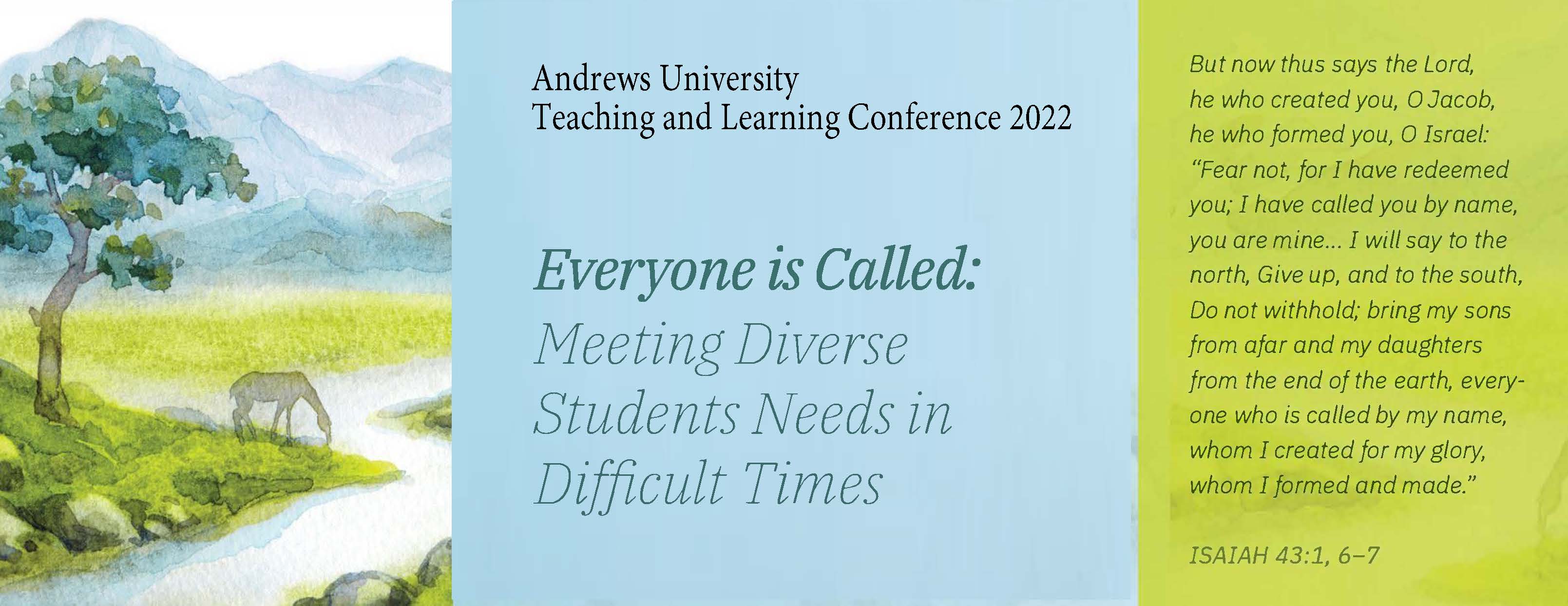Location
Zoom Room 1
Start Date
31-3-2022 1:40 PM
End Date
31-3-2022 2:00 PM
Type of Presentation
Scholarly Work Presentation (15 minutes)
Proposal for Presentation
I would like to present the educational applications to Adventist Education based on the human view of E. G. White who laid the philosophical foundation. According to her, in order to understand the work of education, it is necessary to consider human nature and God's purpose in creation. So I will first talk about the human state at the creation, God's purpose for them, and His educational approach, and secondly, about the human state after corruption, God's plan for them, and educational approach to him. Through this research, I expect to understand how the class in Adventist educational institutions can understand and achieve our educational goal and process for it.
Included in
Curriculum and Instruction Commons, Other Education Commons, Other Educational Administration and Supervision Commons
E. G. White's Human View and It's Educational Application to Adventist Education
Zoom Room 1
I would like to present the educational applications to Adventist Education based on the human view of E. G. White who laid the philosophical foundation. According to her, in order to understand the work of education, it is necessary to consider human nature and God's purpose in creation. So I will first talk about the human state at the creation, God's purpose for them, and His educational approach, and secondly, about the human state after corruption, God's plan for them, and educational approach to him. Through this research, I expect to understand how the class in Adventist educational institutions can understand and achieve our educational goal and process for it.




Acknowledgments
Ellen G. White. (1903). Education. Pacific Press Publishing Company.
Beaudoin, T. (2005). "The Theological Anthropology of Thomas Groome”. Religious Education 100(2): 127-138.
Browning, D. (1991). Fundamental practical theology: Descriptive and strategic proposals, Minneapolis: Fortress Press.
Bryce, M. T. (1990). “Theological anthropology”. In Harper's encyclopedia of religious education, Edited by: Cully, Iris V. C. and Kelly, Kendig Brubaker. p. 646.San Francisco: Harper and Rou.
Anna M. Galeniece, “Adventist Education and Its Eschatological Dimension in the Writings of Ellen White,” The Journal of Adventist Education 82:1 (January-March 2020): 18-22.
Herbert E. Douglass. (2014). “Ellen G. White’s Role in Adventist Education,” The Ellen G. White Encyclopedia, Denis Fortin and Jerry Moon, eds. Hagerstown, Md.: Review and Herald.
John Wesley Taylor V, “Ellen White and the Role of Research,” The Journal of Adventist Education 82:2 (April-June 2020): 27-34.
Ellen G. White. (1898). The Desire of Ages. Pacific Press Publishing Company.
Ellen G. White. (1892). Steps to Christ. Pacific Press Publishing Company.
Brenda Watson and Penny Thompson. (2007). The effective Teaching of Religious Education. Second Edition. Person Education Limited.
General Conference Policy Manual (2003), pp. 221-228 (Education – Departmental Policies: FE 05, FE 10).
Richard Rice. (1997). The Reign of God. Andrews University Press.
William R. Sutton. (1992). “Benevolent Calvinism and the Moral Government of God: The Influence of Nathaniel W. Taylor on Revivalism in the Second Great Awakening”. Religion and American Culture , Volume 2 , Issue 1 , Winter 1992 , pp. 23 - 47
Kathleen O’Gorman. (2007). “The Natural World as Religious Educator: A Mediated Address by the Natural World”. Religious Education Vol. 102 No.1 Winter 2007. The Religious Education Association.
Elmer L. Towns. (1975). A History of Religious Educators. Baker Book house.
Choi, Jaijeon. (2017). “Exploring the definition and pedagogical meaning of ‘Nature’ in Pestalozzi’s Meine Nachforschungen über den Gang der Natur in der Entwicklung des Menschengeschlechtes”. Theory and Practice of Education 2017. Vol. 22, No. 3, pp. 71-98.
George R. Knight, “Education for What? Thoughts on the Purpose and Identity of Adventist Education,” Journal of Adventist Education 79:1, October–December 2016.
Jongchul Chang. (1991). “Kohlbergs Moral Development and Christian Education”. Theology and the World (23), 1991.12, 232-253
Ganhun Ahn. (2003). “Free Will, Moral Responsibility, and Moral Education”. Asian Journal of Education. 2003, Vol 4, no. 2, pp.39-59.
Kiyeong Chang. (2018). “Free Will or Bondage of the Will — Wesley’s “Prevenient Grace” Makes the Difference”. Theology and Mission. 2014, vol., no.45, pp. 137-182.
E. G. White. (1943). Counsels to Parents, Teachers, and Students. Mountain View, Calif: Pacific Press.
Byungchul Ko. (2016). “Moral Responsibilities, Free Will, and Religious Education”. Journal of Human Studies (32), 2016.7, 63-89.
Youngju Hur. (2008). “Inquiry on Possibility of Integration of Traditional and Constructional Education Method: On Whitehead's ‘Rhythm of Education”. The Korean Journal of Educational Methodology Studies. 2008, vol.20, no.2, pp. 91-107
Harro Van Brummelen. (2009). Walking with God in the Classroom. Purposeful Design Publications.